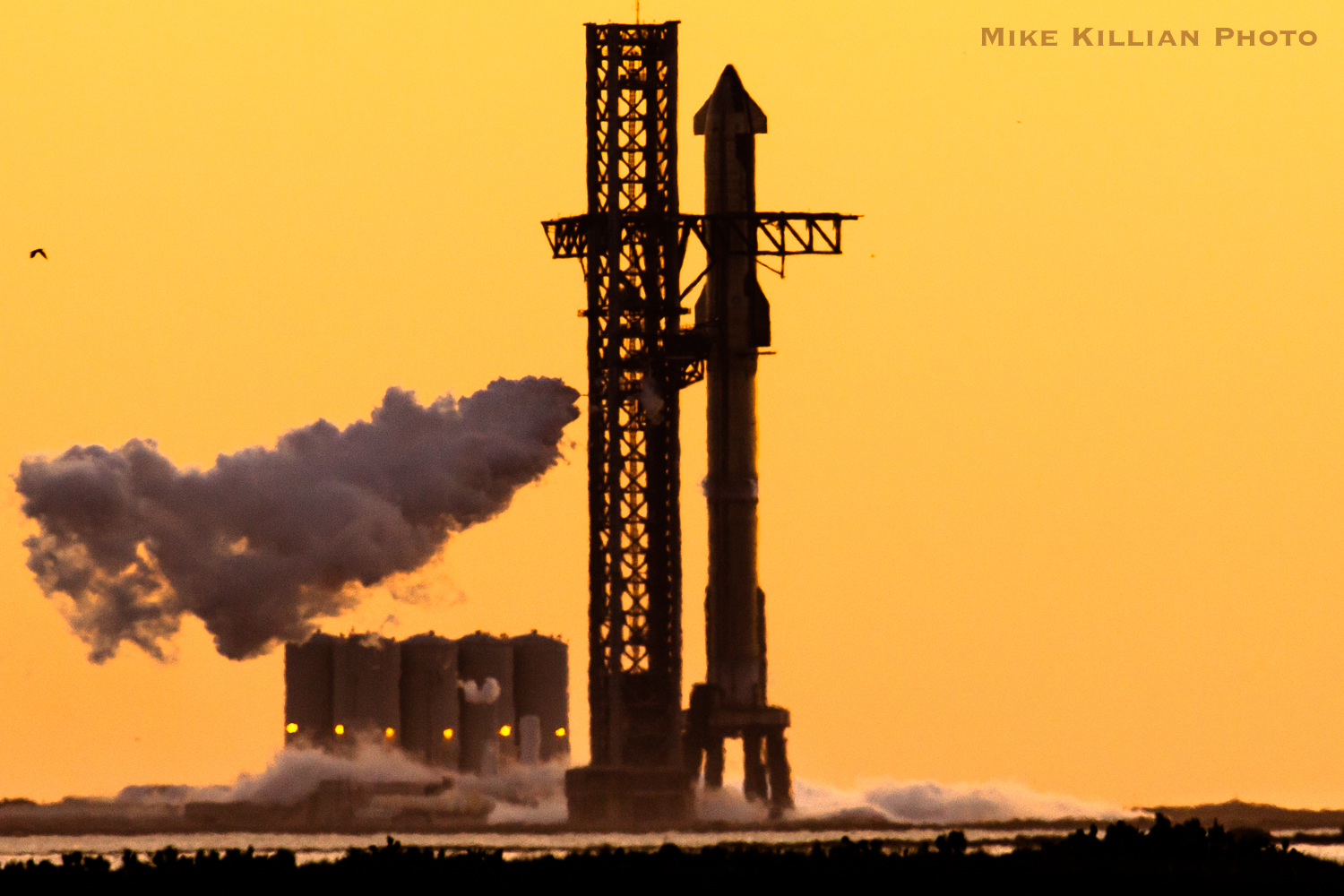
SpaceX successfully flew its 80th “single-stick” Falcon 9 mission of 2023 late Friday, as the Hawthorne, Calif.-headquartered organization gears up for a dramatic triple-header weekend, with a West Coast mission targeted for late Saturday night and the long-awaited second Integrated Flight Test (IFT-2) of the Starship/Super Heavy stack standing ready at Boca Chica, Texas, for liftoff early Saturday morning. Laden with 23 Starlink satellites, totaling 40,600 pounds (18,400 kilograms), Friday night’s flight marked the 54th launch of more than 1,700 of these flat-packed internet communications satellites so far in 2023.
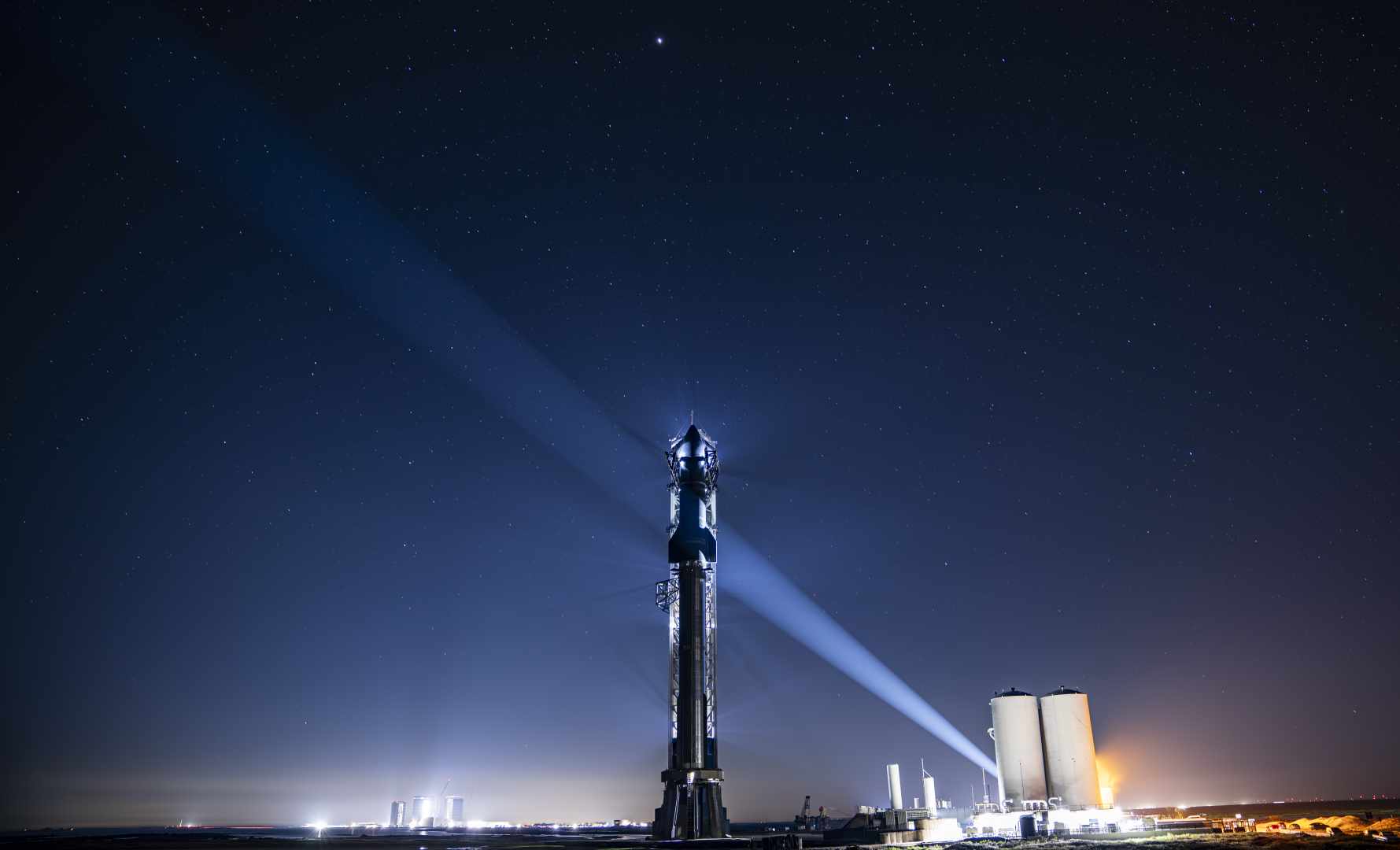
Weather conditions for last night’s opening launch attempt—which benefited from a raft of T-0 opportunities between 11 p.m. EST Friday and 2:59 a.m. EST Saturday—proved generally favorable, with a 60-percent probability of acceptability, improving to 90 percent in the event of a 24-hour delay to Saturday evening. A low that formed near Miami was predicted to bring strong onshore winds and precipitation by Friday morning, but forecasters at the 45th Weather Squadron at Patrick Space Force Base expected it to have shifted sufficiently far eastwards by Friday night to not impact a launch attempt.
“The primary concern for launch day will be liftoff winds, with a chance of Cumulus Cloud Rule violations as well,” noted the 45th. “By Saturday, the risk of a weather violation should lower, as winds weaken and the mid and lower levels of the atmosphere get drier.”
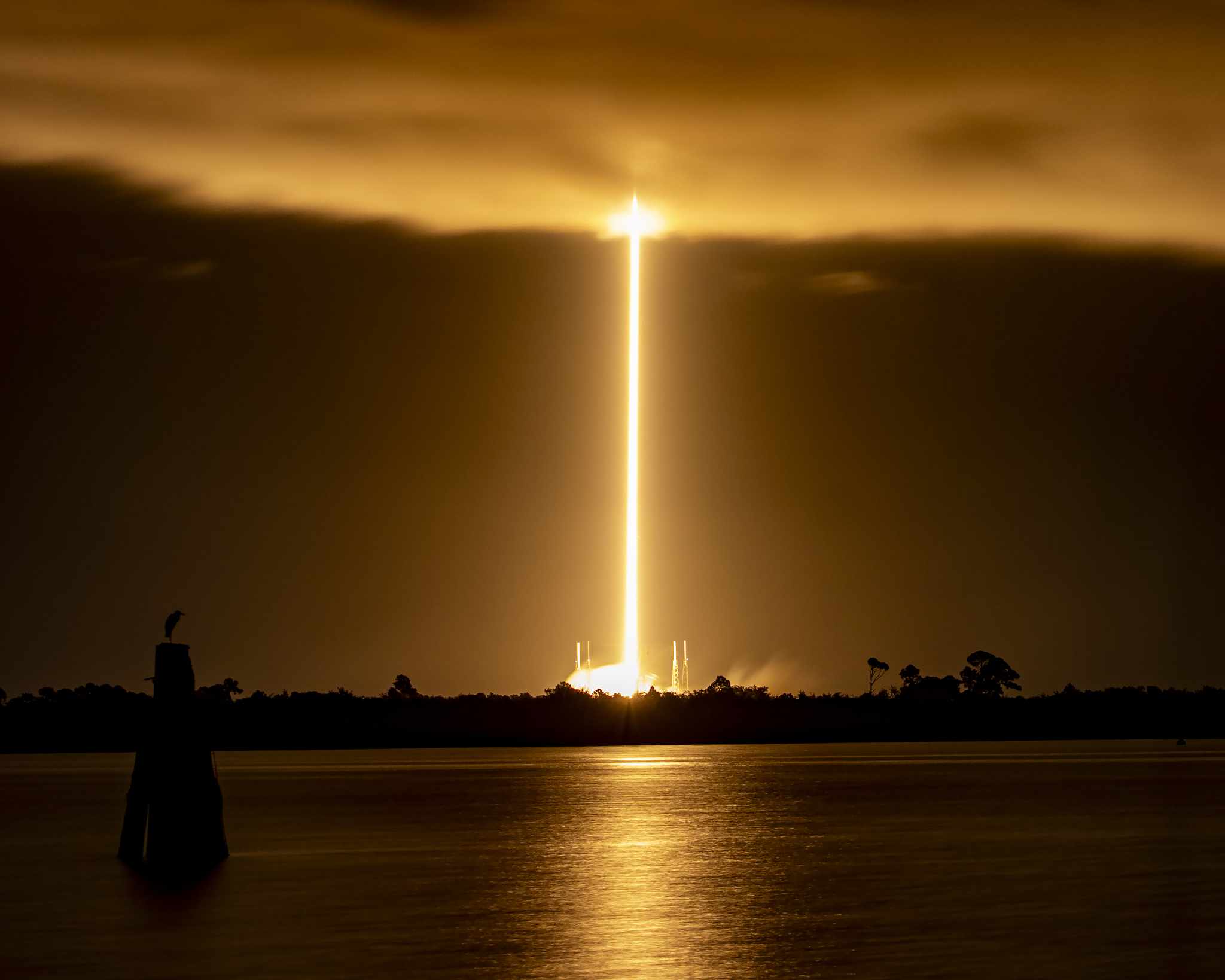
In readiness for launch, the Autonomous Spaceport Drone Ship (ASDS), “Just Read the Instructions”, departed Port Canaveral last Monday, bound for a recovery position some 390 miles (630 kilometers) offshore in the Atlantic Ocean. Yesterday, the booster for SpaceX’s 80th Falcon 9 mission of the year—B1069, a vehicle almost lost at the close of her maiden voyage, nearly two years ago—was transported out of storied Space Launch Complex (SLC)-40 at Cape Canaveral Space Force Station, Fla., for her seventh launch of the year and her 11th outing in total.
B1069 entered the fleet in December 2021, delivering the CRS-24 Cargo Dragon on the first leg of its month-long trek to the International Space Station (ISS). But she was almost lost in a hair-raising touchdown at the close of her maiden voyage, which came close to seeing her miss the deck of the drone shop and topple into the ocean.
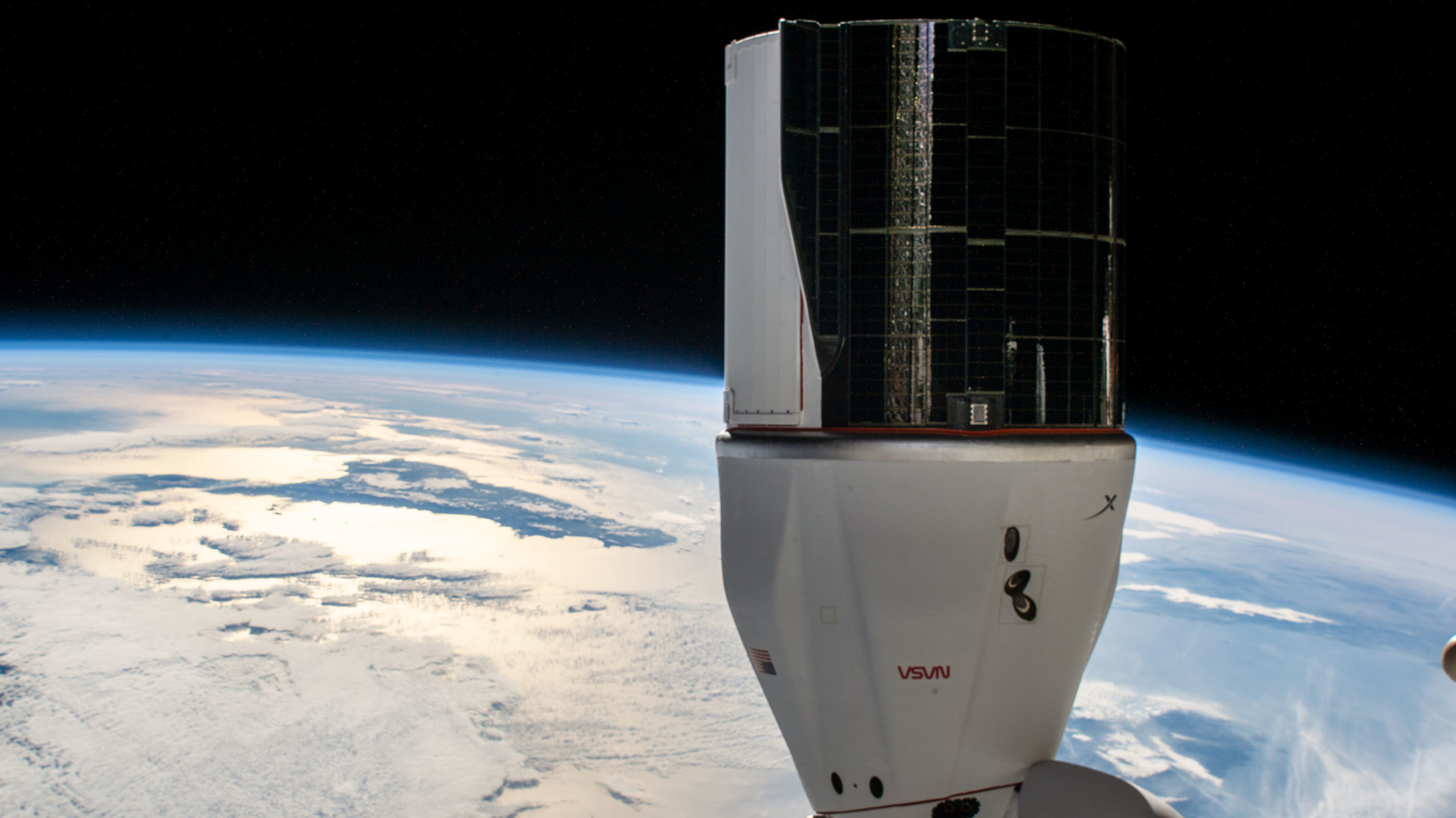
The incident necessitated substantial repairs—including a brand-new suite of Merlin 1D+ first-stage engines—before B1069 re-entered service to log three missions in the second half of last year: emplacing 54 Starlinks to orbit in August, Eutelsat’s Hotbird 13F geostationary communications satellite in October and 40 broadband satellites in December for London, England-based OneWeb.
So far in 2023, she has now flown seven times, lifting six Starlink batches, totaling 232 satellites, to low-Earth orbit, as well as the dual-stacked SES-18 and SES-19 geostationary communications satellites for Luxembourg-based provider SES, back in March. Her March flight, which saw her set a personal best of only 43 days between missions, also formed part of a SpaceX in-house record of launching a pair of Falcon 9s within only four hours and 12 minutes of each other.
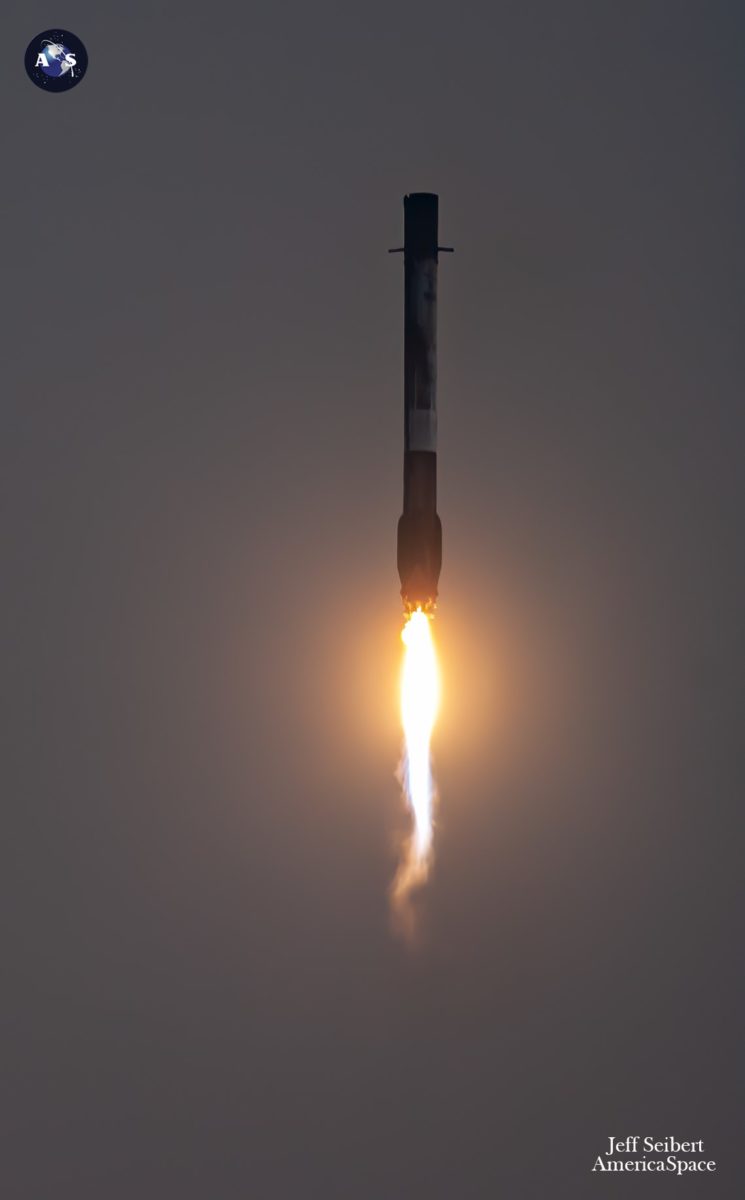
SpaceX teams opted to aim for a T-0 point later in last night’s window, causing B1069 to actually go airborne at 12:05 a.m. EST, pushing it squarely into the opening minutes of Saturday morning. Powering into the post-midnight darkness, the 230-foot-tall (70-meter) Falcon 9 performed with characteristic perfection, as B1069’s nine Merlin 1D+ engines burned furiously for 2.5 minutes, ahead of the separation of the booster and a dramatic return to land on JRTI’s expansive deck.
Meanwhile, the single Merlin 1D+ Vacuum engine of the Falcon 9’s second stage executed a standard six-minute “burn” to insert the 23 Starlinks into orbit, deploying the stack at 65 minutes after launch. As a network, Starlink facilitates high-speed and low-latency internet provision to over 60 sovereign nations and international markets in North and South America, Europe, Asia, Oceania and Africa. So far in November, Europe’s Georgia, Africa’s Benin and Asia’s Maldives have joined the network.
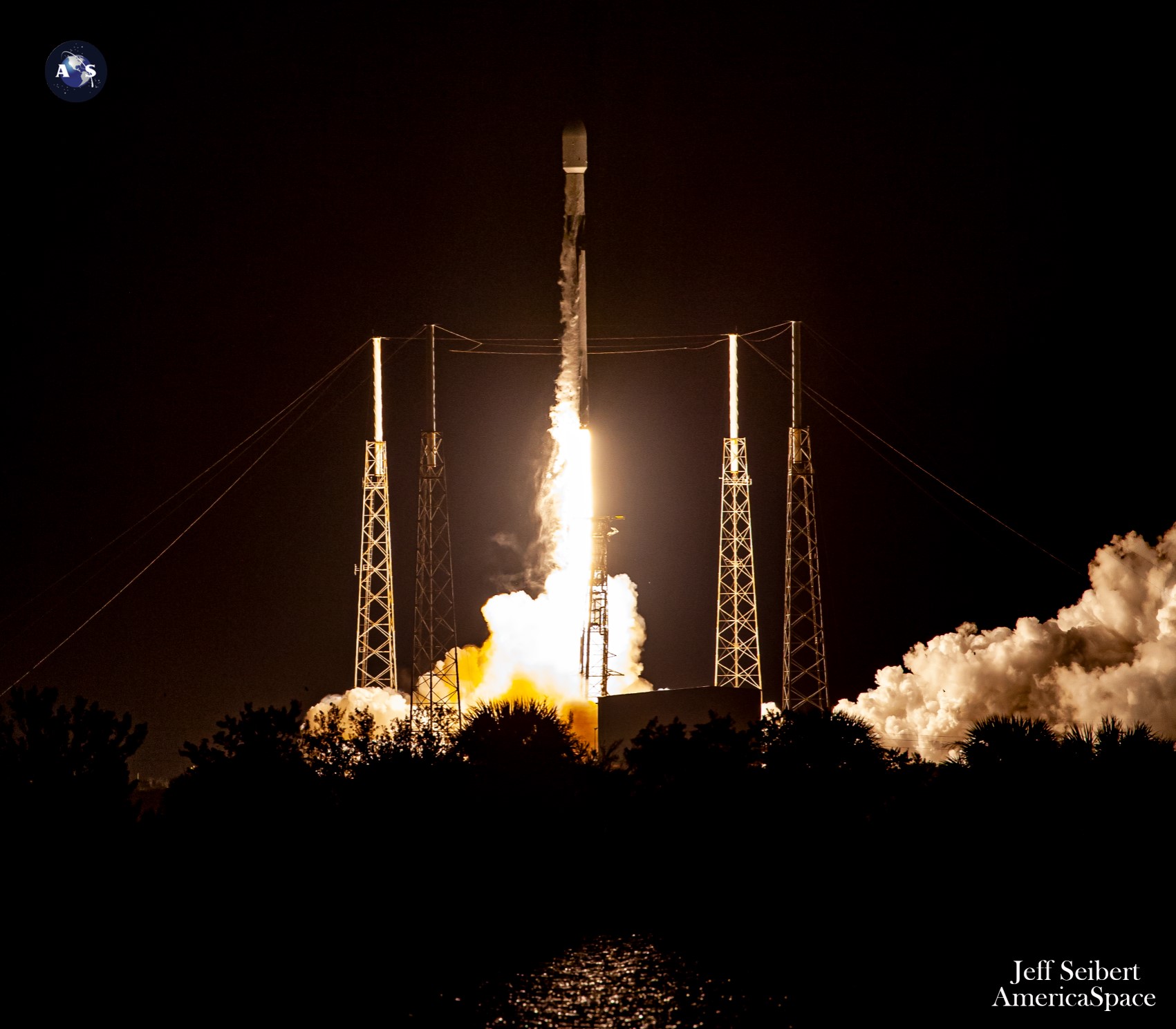
The Starlink “V2 Mini” satellites, first flown in February, boast three to four times greater “usable” bandwidth than earlier Starlink iterations. “V2 Minis include key technologies—such as more powerful phased-array antennas and the use of E-Band for backhaul—which will allow Starlink to provide 4x more capacity per satellite than earlier iterations,” SpaceX explained. “Among other enhancements, V2 Minis are equipped with new argon Hall thrusters for on-orbit maneuvering.”
Florida-based intercity operator Brightline adopted Starlink on its trains earlier in 2023, the first passenger rail service in the world to do so. Additionally, El Salvador’s Ministry of Education has begun integrating Starlink capability into its schools to help close the digital divide between urban and remote rural communities and 50 Rwandan schools are now connected via Starlink’s high-speed internet service.
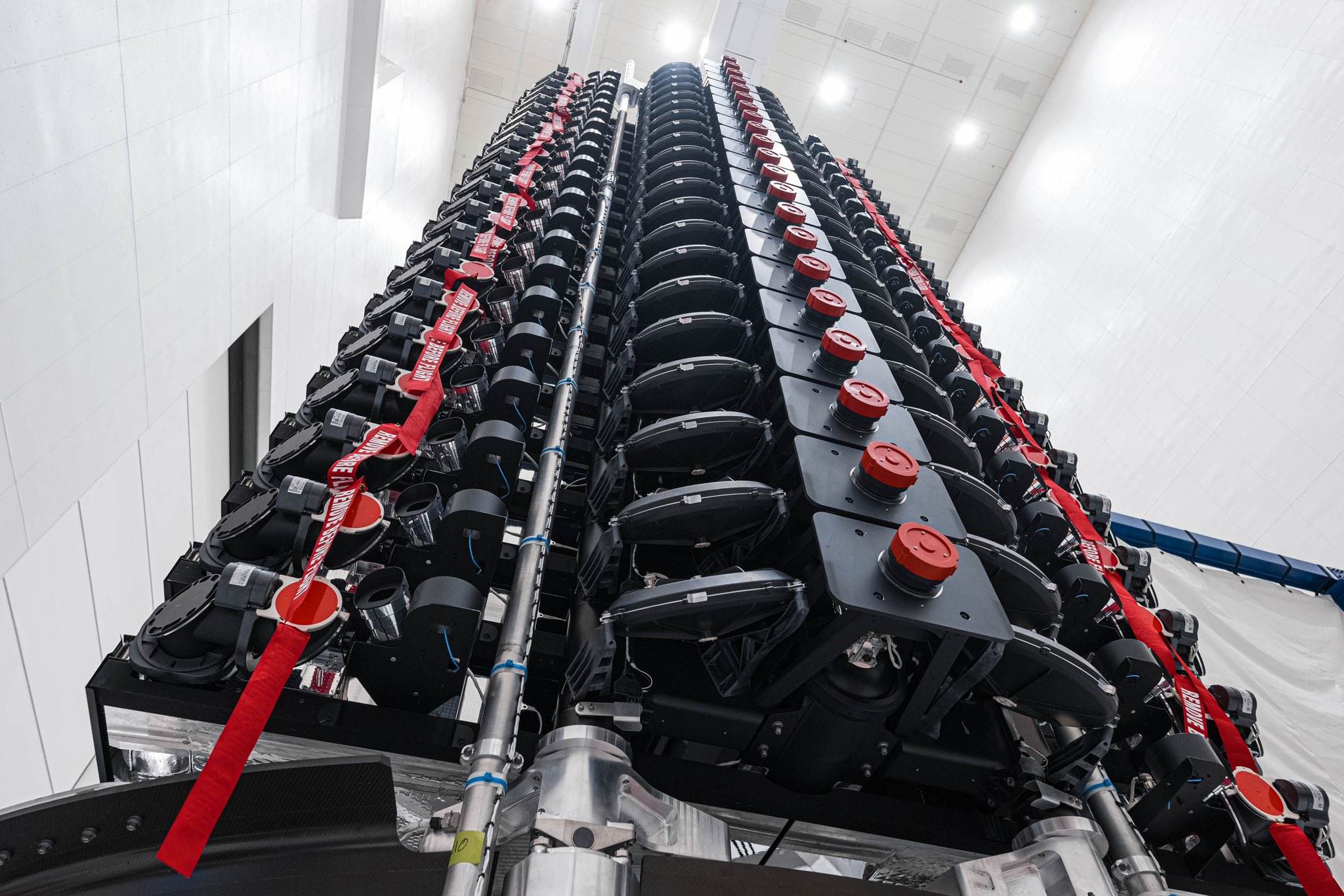
With last night’s launch, SpaceX has logged 80 missions using 15 single-stick Falcon 9s, one of which has flown eight times. Four new boosters entered the fleet between January and August, with over 1,700 Starlinks successfully deployed on 54 missions.
Added to that list, Falcon 9s lofted eight geostationary communications satellites, four multi-payload Transporter rideshares, three crewed and uncrewed Dragon flights to the International Space Station (ISS), two missions of the Tranche 0 Transport and Tracking Layer (TTL) for the Space Development Agency (SDA) and Europe’s Euclid deep-space observatory. That flotilla of flights saw SpaceX’s turnaround and reusability statistics jump incrementally, as the organization flew its first eight-launch month in March and its first nine-launch month in August and saw boosters log record-setting 16th, 17th and 18th missions.
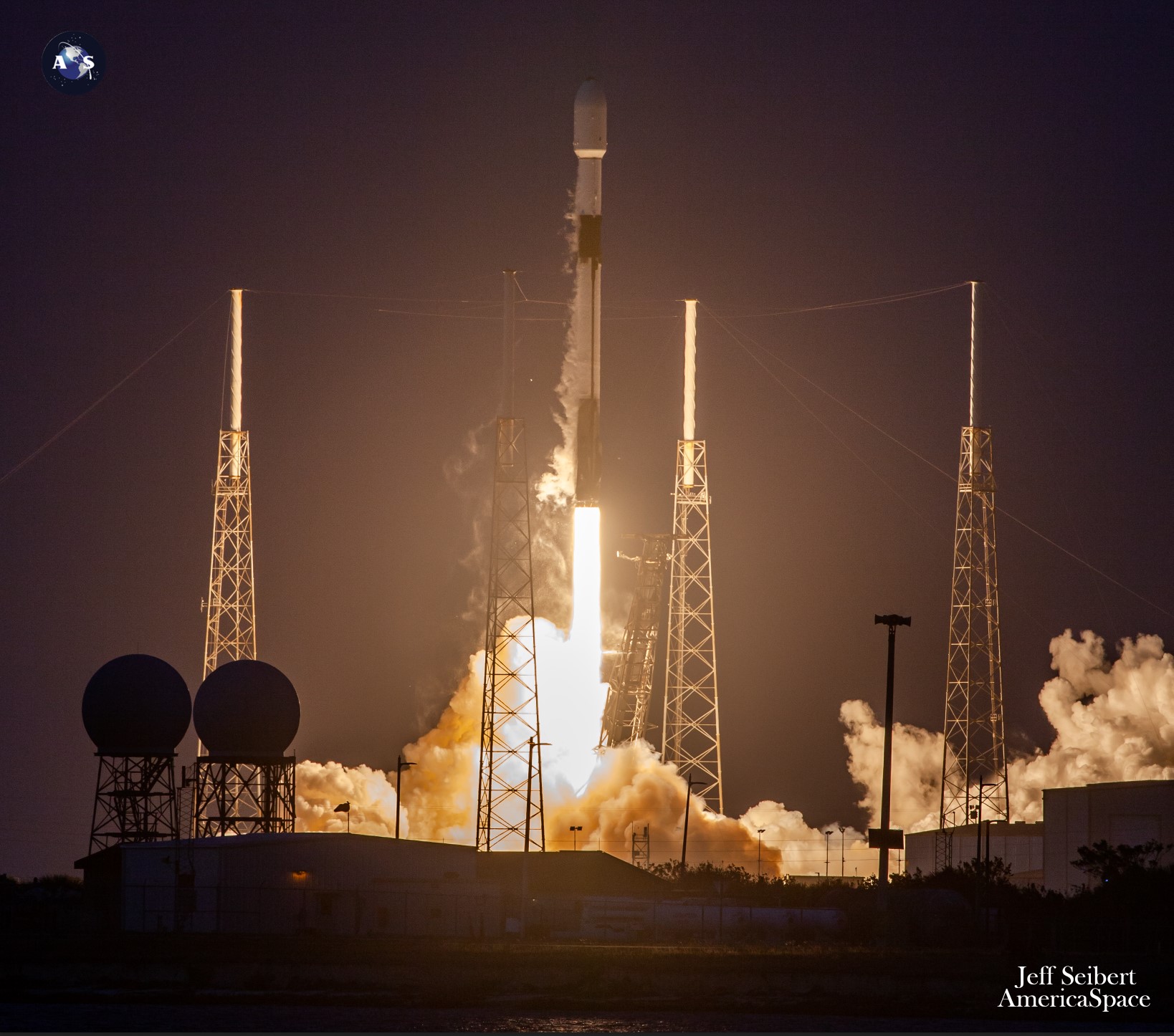
Late Saturday night, SpaceX aims to fly the veteran B1063 booster from Space Launch Complex (SLC)-4E at Vandenberg Space Force Base, Calif., laden with another 23 Starlinks. Liftoff is currently targeted for 10:55 p.m. PST Saturday (1:55 a.m. EST Sunday), with additional T-0 points extending until 2:52 a.m. PST (5:52 a.m. EST) Sunday.
Flying its seventh time in 2023 and its 15th time across a three-year career, B1063 is a dedicated “Vandenberg Falcon”, having flown all but one of its missions from the mountain-ringed West Coast site. Following tonight’s flight, the booster is targeting a landing on the “Of Course I Still Love You” drone ship, situated offshore in the Pacific Ocean.
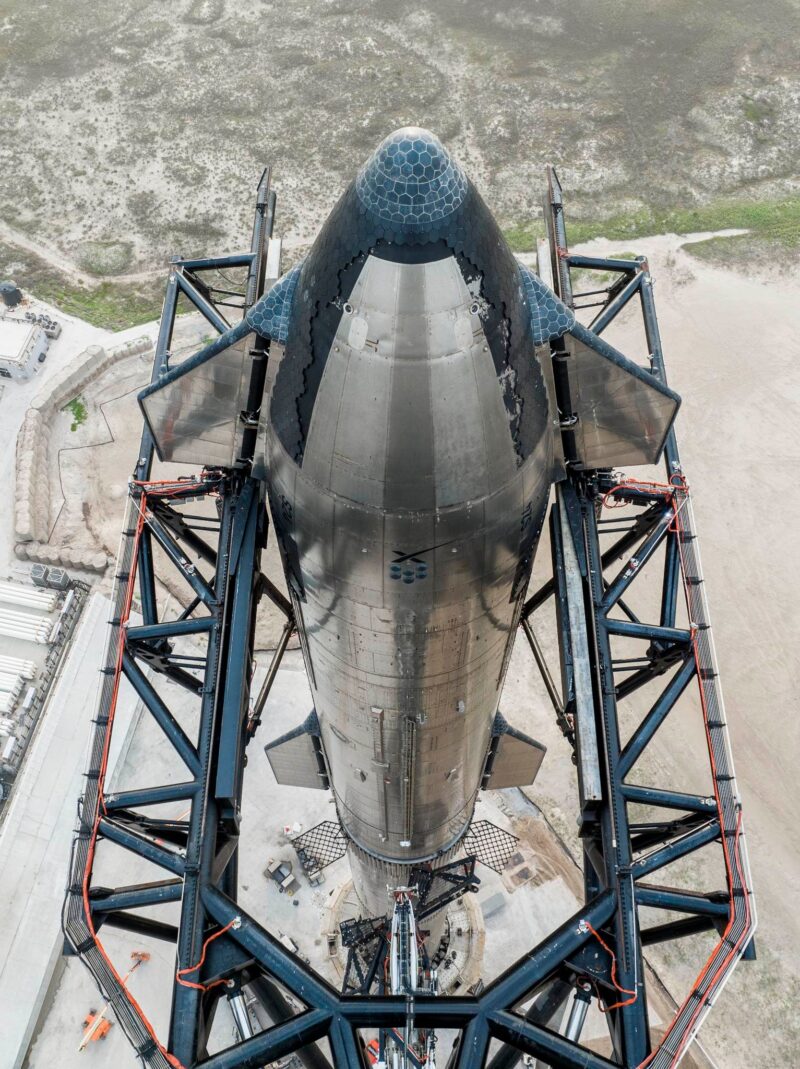
But for all the drama these two missions have afforded and will afford, the real highlight of the weekend is the long-awaited second Integrated Flight Test (IFT-2) of the 394-foot-tall (120-meter) Starship/Super Heavy stack out of Starbase in Boca Chica, Texas. As previously outlined by AmericaSpace, liftoff was initially targeted during a two-hour “window” from 7 a.m. through 9 a.m. CST Friday, with Ship 25 hoisted atop Booster Nine on Thursday, but within hours the attempt had been scrubbed, the Starship destacked and launch recycled to a backup opportunity on Saturday morning.
“We need to replace a grid-fin actuator,” tweeted SpaceX CEO Elon Musk on X. “Launch is postponed to Saturday.”
Late Friday night, SpaceX reported the stack was “ready on the launch pad” at Starbase, tracking a narrow 20-minute window, which opens at 7 a.m. CST Saturday.
“This is another chance to put Starship in a true flight environment, maximizing how much we learn,” SpaceX tweeted. “Rapid iterative development is essential as we work to build a fully reusable launch system capable of carrying satellites, payloads, crew and cargo to a variety of orbits and Earth, lunar and Martian landing sites.”
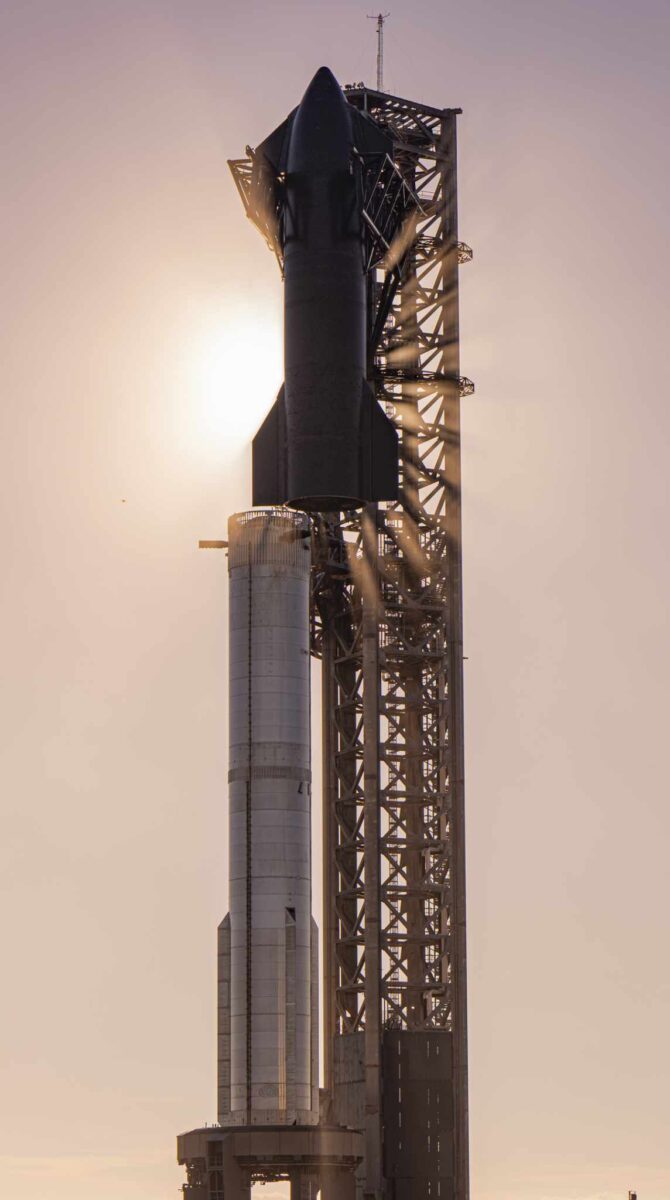
The long-awaited second outing of the 394-foot-tall (120-meter) booster comes after many weeks of speculation, with even SpaceX Senior Director of Human Spaceflight Programs Benji Reed remaining non-committal following questions at the post-Launch Readiness Review (LRR) briefing ahead of last week’s CRS-29 Cargo Dragon mission to the International Space Station (ISS). Mr. Reed indicated only that SpaceX was aiming for a launch in the mid-November timeframe.
On its initial launch in April, the Starship/Super Heavy ascended from Boca Chica under 16.7 million pounds (7.5 million kilograms) of thrust from its 33 Raptor engines, the highest liftoff impulse of any orbital-class booster in history. But after suffering multiple engine failures immediately after liftoff, the behemoth was remotely destroyed at an altitude of about 24 miles (39 kilometers) by the Autonomous Flight Safety System (AFSS) and a subsequent Federal Aviation Administration (FAA) investigation into the mishap was expected to take several months to complete.
According to SpaceX, “numerous lessons” were learned from April’s mishap, which—in addition to the loss of the vehicle at altitude—also produced substantial damage to the Boca Chica launch facilities. Efforts have been implemented “significantly reinforce” the pad foundations and integrate a water-cooled steel flame deflector, together with other upgrades. A new electronic Thrust Vector Control (TVC) system will feature “fewer potential points of failure” and greater energy efficiency over traditional hydraulic systems.
More recently, in July the second Starship booster (Booster Nine) was transported to the pad for tests, with an expectation that it will loft Ship 25 on a transatmospheric flight closely mirroring the trajectory envisaged for its unsuccessful April mission. It underwent a successful Static Fire Test a few weeks later and in late October SpaceX teams conducted a single-engine test to demonstrate Starship’s deorbit burn capability and loaded the entire vehicle with propellant in a flight-like launch-day rehearsal.
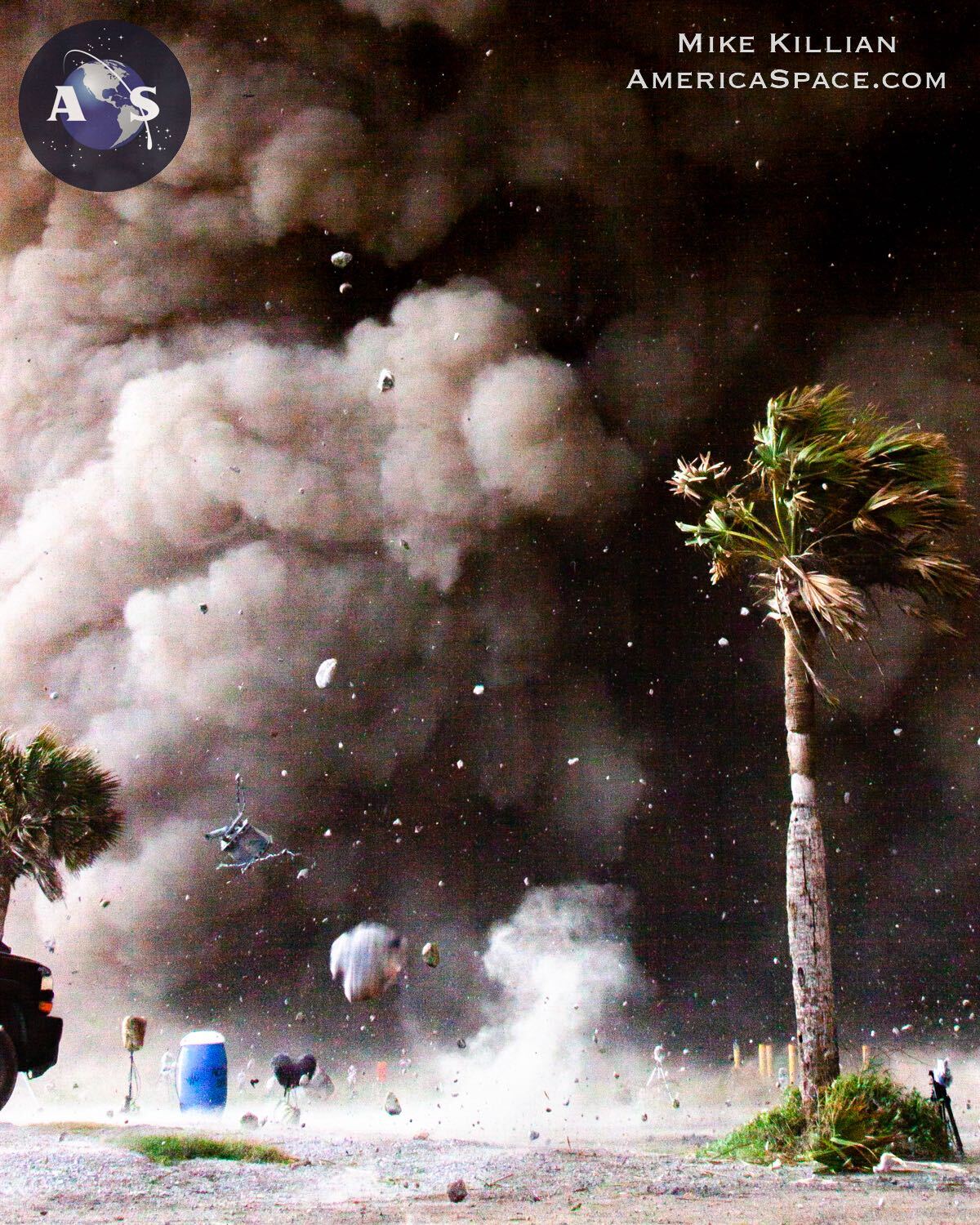
At T-2 hours tomorrow morning, the SpaceX Launch Director will conduct a poll of the team, ahead of authorizing the loading of more than ten million pounds (4.5 million kilograms) of liquid oxygen and liquid methane into the tanks of the Super Heavy and Starship. Fueling of the booster will commence at T-97 minutes, with that of the Starship expected to be underway by T-77 minutes.
Chill-down of the Raptor engines on both stages will occur at T-19 minutes and 40 seconds. Three seconds prior to liftoff, the Super Heavy’s Raptors will ignite, with “Excitement Guaranteed” at T-0.

The 233-foot-tall (71-meter) Super Heavy will lift the stack uphill for the opening two minutes and 39 seconds of flight, before the Starship’s own Raptors ignite in a so-called “Hot Staging” separation event. “Starship and Super Heavy are being upgraded to use a separation method called hot staging,” SpaceX tweeted earlier this summer, “where Starship’s second-stage engines will ignite to push the ship away from the booster.”
Returning homeward, the discarded Super Heavy will execute a 54-second boostback burn, slowing to transonic speeds at 6.5 minutes after liftoff, then performing an 18-second landing burn for a vertical splashdown in the Gulf of Mexico, some 20 miles (32 kilometers) off the Texas Coast, a little more than eight minutes into the mission.
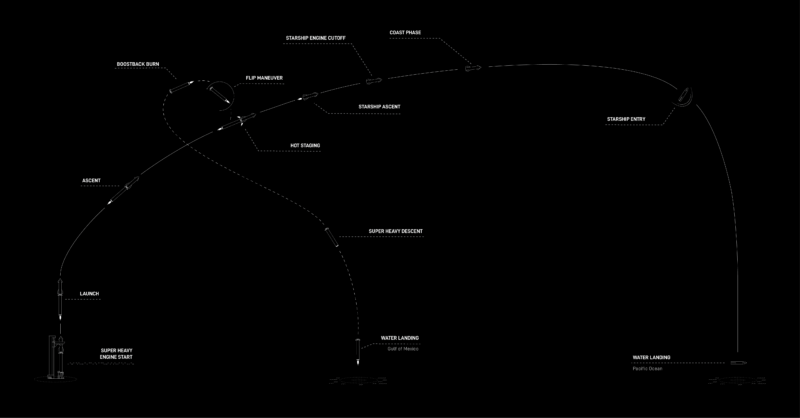
Meanwhile, after separation from the booster, the Starship will ignite its Raptor engines for a little less than six minutes, before shutting down and coasting three-quarters of the way around the planet for the next 68 minutes. Like the Super Heavy, it is not intended for recovery on this inaugural test flight and will splash down—for what SpaceX describes hopefully as “an exciting landing”—in the Pacific Ocean, likely about 60 miles (100 kilometers) northwest of Kauai in Hawaii.




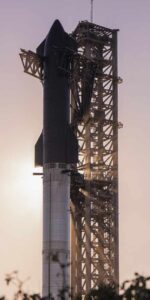

2 Comments
Leave a Reply2 Pings & Trackbacks
Pingback:SpaceX Targets New Records, Heads into 2023 Year-End - AmericaSpace
Pingback:SpaceX Targets New Records, Heads into 2023 Year-End - SPACERFIT